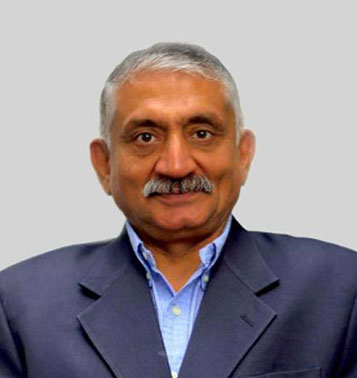PAFI VIEWS
Public policy direction and public affairs in an increasingly transparent World
Author - Ajay Khanna

Public policy direction and public affairs in an increasingly transparent World
Events over the past two years have seen the World in turmoil. Economies for the most part are hurting, employment opportunities have under gone under a rejig or diminished, supply chains are being altered. The world is trying to claw back to normalcy. With varying degrees of freedom available to countries around the globe, recent data shows that India is among those, relatively better placed to heal itself as also contribute to the economic revival process.
Speed, scale and sustainability are the bedrocks for such revival. This would require agreement and resolution among diverse stake holders with regard to priorities and the path forward. An ideal scenario for grounded public affairs is to take a leap forward and play a significant role to shape progressive public policy to deliver future outcomes.
Having come thus far, public affairs has taken root as a desirable interface between government and industry where sound rationale and mutual understanding of business and national imperatives alongside priorities can lead to sustainable policy measures.
A lot has happened in India that is ripe for a scale-up. The development of alternative payment systems, pervasive banking platforms, innovative healthcare models, IT-enabled governance mechanisms, Digital Stack, viable supply chain alternatives in automobiles, pharmaceuticals, electric propulsion vehicles, alternate energy, communication equipment, logistics to name a few. In addition, there has been an explosion of entrepreneurial energy leading to a large number of startups, capable of graduating to being a unicorn. All these efforts require nurturing through sensible policies that allow enterprise to grow and compete globally while ensuring fair play.
It is well known that new initiatives precede regulation. Therefore, it is incumbent upon industry and government to take a holistic view that not only safeguards national and consumer interests but also furthers the development and scale-up. The number of promising initiatives can be driven through benign policy. Take the case of banking reforms that have encouraged scalability through a combination of technology and forward looking regulation. Alternate payment systems and the Digital India movement have brought in innovations such as UPI, BHIM and others that have taken the fintech world by storm. Separately, investor protection is an area where through oversight by government, SEBI, with inputs from industry and stakeholders, fresh norms of corporate disclosure have evolved.
This policy landscape is a fertile ground for productive public policy engagement. There is no substitute for comprehensive product knowledge with a thorough understanding of the business landscape, environmental surround and authenticity of purpose that breeds trust, respect, recognition and a voice at the table for a public affairs professional in a consultative relationship.
Thankfully, the public affairs function has evolved a great deal. Not only is the discipline being formally taught as part of curricula in prestigious institutions but the function is also being entrusted to senior-most professionals in the business. Increasingly, bright young individuals with a professional background are also attracted to public affairs, auguring well for the profession and its credibility.
Public affairs is also playing an important role both in the boardrooms as well as in external advocacy towards India’s aspirations of becoming a manufacturing hub. At this juncture, especially where alternatives to relocating manufacturing bases and de-risking supply chains from regional and geographic overdependence are being considered, highlighting India’s significant advantages of political neutrality, baseline capability and intellectual prowess is shaping investment pre-disposition.
Recent co-operative inter-governmental dialogue with the QUAD countries reflects this ongoing alignment and concerted push by both government and industry. These efforts are likely to spur the ‘Make in India’ thrust, a noteworthy public affairs initiative that marks the convergence of government priorities with industry imperatives to safeguard strategic sectors while growing those having export potential.
The refrain on the ‘Ease of doing business in India’ or the ‘Pleasure of doing business’ as PAFI has been propagating, has led to ongoing reforms. However, much more needs to be done in this space through continued representation and dialogue.
A lot has been achieved in the 75 years since independence and as we look forward to a vibrant and greater role for India in its 100th year, divergent ideologies, beliefs and opinions will need re-alignment. Innovation, Infrastructure, the digital India movement shall power big changes, creating economic multipliers with far reaching consequences. Undoubtedly, public affairs will be that powerful tool to generate synergy through stakeholder engagement. I, therefore, foresee a much enlarged and strategic role for public affairs in the roadmap to India of 2047!


